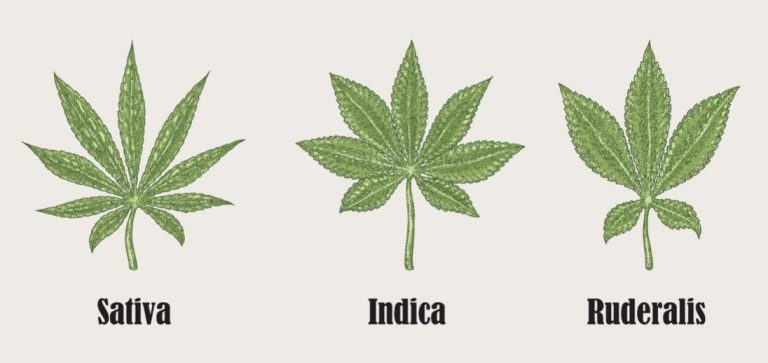If you didn’t know any better, you might assume that there is only one type of basil — but you would be sorely mistaken. The basil most people are most familiar with is actually sweet basil; there is also Genovese basil, lemon basil, Thai basil, purple basil, lime basil, holy basil and so many more. Different types of basil are useful in different contexts, so knowing about them can be beneficial to those interested in becoming more proficient in the kitchen.
The same is true of cannabis. If you are new to cannabis consumption, you might be tempted to believe that all weed is the same, but you would be depriving yourself of critical nuances that affect proper use. Here’s a guide to the three types of cannabis, indica, sativa and ruderalis, and why the differentiation matters.
Cannabis Sativa
Cannabis sativa was the first “species” of cannabis discovered and named by the West. In 1753, Swedish botanist Carl Linnaeus began his studies of a peculiar plant that grew tall, boasted narrow leaves and grew well in warm, tropical climates. Within the taxonomic system Linnaeus was pioneering, the scientist named the plant Cannabis sativa.
Sativa plants are likely the most common cannabis plants around the world, likely because they are more forgiving of humid climates and grow larger to produce more abundant harvests. Within cannabis culture, sativa plants are believed to produce the right combination of cannabinoids and terpenes to stimulate users, providing ample energy, focus and creativity. Described as a “head high,” these effects allow users to remain active and productive while benefiting from the drug.
True sativas are relatively rare; instead, you are more likely to find sativa-dominant hybrids. You can ask the budtenders at your favorite dispensary in Tucson for the following sativa and sativa-dominant strains:
- Sour Diesel. THC content: 18 percent
- Jack Herer. THC content: 17 percent
- Lemon Haze. THC content: 19 percent
- Tropicana Cookies. THC content: 16 percent
- Lemon Meringue. THC content: 21 percent
Cannabis Indica
Only a couple decades after Linnaeus “discovered” and named Cannabis sativa, French naturalist Jean-Baptiste Lamarck received samples of a plant from India, which he named Cannabis indica in honor of the subcontinent. Unlike Cannabis sativa, indica plants are short and bushy, with wide, dark-green leaves and a short flowering cycle. More often, indica plants grow in harsh, mountainous environments, and they are tolerant of cold, dry air.
Indica strains provide what cannabis connoisseurs often call a “body high.” Though indicas still provide psychoactive sensations like euphoria, enthusiasts believe that most of the effects of these strains are focused on the muscles, providing deep relaxation. Usually, indica strains are recommended for use in the evening, to help destress users and even lull them into restful sleep. This could be due to a higher concentration of CBD in indica plants, but it certainly isn’t the result of lower THC.
Like sativas, true indicas aren’t particularly common. Rather, you are more likely to see indica hybrids. Here are a few top indicas to try today:
- Zkittlez. THC content: 19 percent
- Northern Lights. THC content: 16 percent
- Bubba Kush. THC content: 17 percent
- G13. THC content: 18 percent
- Ice Cream Cake. THC content: 21 percent
Cannabis Ruderalis
In 1924, Russian botanist D. E. Janischewsky named Cannabis ruderalis, using a Latin term for “weedy” to describe this latest cannabis discovery. While both Cannabis sativa and Cannabis indica are relatively elegant plants, ruderalis is incredibly small and scrubby, rarely growing taller than two feet and having thin stems and few branches.
Some cannabis aficionados believe that ruderalis is the species that many call “hemp.” Indeed, ruderalis strains have dramatically less THC than sativas and indicas, to the extent that you are unlikely to see any ruderalis strains in your local dispensary. Instead, ruderalis strains can be cultivated for CBD, for their fiber to make textiles or for their seeds.
In truth, these divisions of the cannabis plant are outdated — genetic research has discovered essentially no difference between so-called sativa and indica plants. Still, because dispensaries use the terms in describing the growth patterns and effects of different strains, it remains helpful to understand the terms yourself.



0 Comments